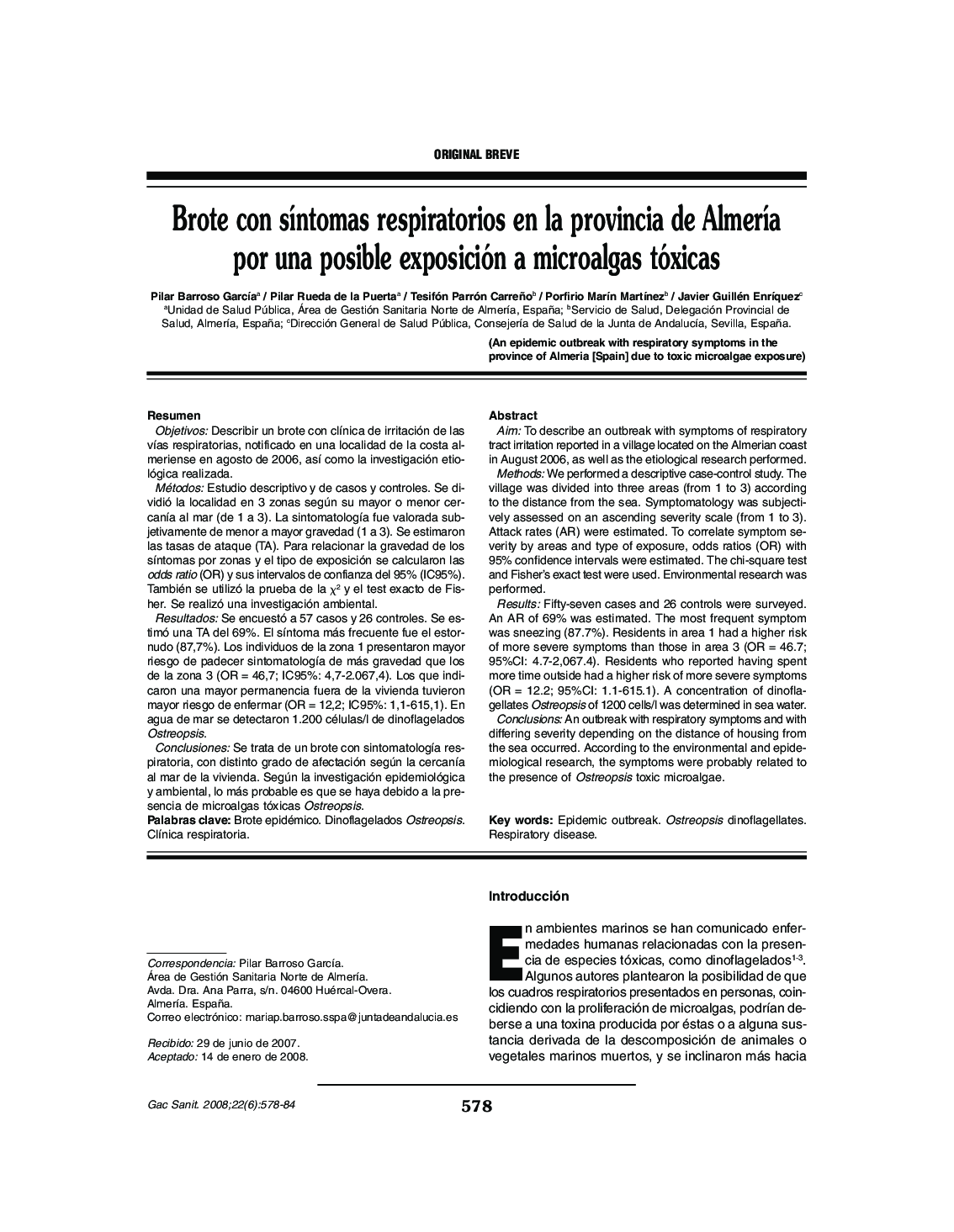| Article ID | Journal | Published Year | Pages | File Type |
|---|---|---|---|---|
| 1074306 | Gaceta Sanitaria | 2008 | 7 Pages |
ResumenObjetivosDescribir un brote con clínica de irritación de las vías respiratorias, notificado en una localidad de la costa almeriense en agosto de 2006, así como la investigación etiológica realizada.MétodosEstudio descriptivo y de casos y controles. Se dividió la localidad en 3 zonas según su mayor o menor cercanía al mar (de 1 a 3). La sintomatología fue valorada subjetivamente de menor a mayor gravedad (1 a 3). Se estimaron las tasas de ataque (TA). Para relacionar la gravedad de los síntomas por zonas y el tipo de exposición se calcularon las odds ratio (OR) y sus intervalos de confianza del 95% (IC95%). También se utilizó la prueba de la χ2 y el test exacto de Fisher. Se realizó una investigación ambiental.ResultadosSe encuestó a 57 casos y 26 controles. Se estimó una TA del 69%. El síntoma más frecuente fue el estornudo (87,7%). Los individuos de la zona 1 presentaron mayor riesgo de padecer sintomatología de más gravedad que los de la zona 3 (OR = 46,7; IC95%: 4,7-2.067,4). Los que indicaron una mayor permanencia fuera de la vivienda tuvieron mayor riesgo de enfermar (OR = 12,2; IC95%: 1,1-615,1). En agua de mar se detectaron 1.200 células/l de dinoflagelados Ostreopsis.ConclusionesSe trata de un brote con sintomatología respiratoria, con distinto grado de afectación según la cercanía al mar de la vivienda. Según la investigación epidemiológica y ambiental, lo más probable es que se haya debido a la presencia de microalgas tóxicas Ostreopsis.
AimTo describe an outbreak with symptoms of respiratory tract irritation reported in a village located on the Almerian coast in August 2006, as well as the etiological research performed.MethodsWe performed a descriptive case-control study. The village was divided into three areas (from 1 to 3) according to the distance from the sea. Symptomatology was subjectively assessed on an ascending severity scale (from 1 to 3). Attack rates (AR) were estimated. To correlate symptom severity by areas and type of exposure, odds ratios (OR) with 95% confidence intervals were estimated. The chi-square test and Fisher's exact test were used. Environmental research was performed.ResultsFifty-seven cases and 26 controls were surveyed. An AR of 69% was estimated. The most frequent symptom was sneezing (87.7%). Residents in area 1 had a higher risk of more severe symptoms than those in area 3 (OR = 46.7; 95%CI: 4.7-2,067.4). Residents who reported having spent more time outside had a higher risk of more severe symptoms (OR = 12.2; 95%CI: 1.1-615.1). A concentration of dinoflagellates Ostreopsis of 1200 cells/l was determined in sea water.Conclusions: An outbreak with respiratory symptoms and with differing severity depending on the distance of housing from the sea occurred. According to the environmental and epidemiological research, the symptoms were probably related to the presence of Ostreopsis toxic microalgae.
